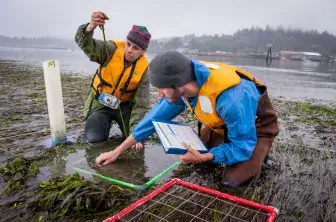Strategy 5: Adapt Everywhere
Coordinate Federal Data

Planning for climate change requires a high level of coordination that currently does not exist across the federal government. Agencies should share their data sources and have a chain of command that clarifies roles and responsibilities. Ensuring that data is high-quality and easily accessible makes it easier for everyone to determine how to meet their community's needs.
More recommendations
Despite several attempts, the United States remains one of the few countries that lacks a highly coordinated national adaptation strategy. Although local climate adaptation planning is crucial, coordination at the federal level is also necessary for projects that require significant capital or regional cooperation. Every federal department has responsibility for important aspects of climate change adaptation. However, the effectiveness of the policies and investments depends critically on actions by other departments, as well as states, communities, tribes, and companies.
Centralize the federal climate response and develop a comprehensive climate adaptation plan with a clear chain of command.
The White House National Climate Advisor should advance a cohesive climate adaptation plan by forming interagency working groups that will facilitate improved coordination and communication. Key to these groups will be establishing a clear chain of command for climate policy within the federal government that outlines the specific role of every agency. These working groups can also facilitate efficient and equitable distribution of funding resources and spur the creation of additional public-private partnerships.
Improve federal strategy for prioritizing and coordinating climate investments and data.
A national strategy should include mechanisms for learning from experience, sharing promising practices, and integrating a commitment to justice. It should provide a durable but flexible road map that considers local interests and the needs of vulnerable communities. Adaptation is never one-size-fits-all, but increasing national planning, data, and project coordination is a critical starting point for efficiently allocating scarce resources. Because adaptation technologies will change and the needs of individual communities will vary over time, this strategy should include provisions for periodic assessment of the effectiveness and efficiency of climate spending.
Much of the data needed to help both the nation and local communities develop adaptation strategies already exist.[i] But because of the current difficulty of navigating many sources of federal data, a central element of a national climate adaptation strategy must be the organization and provision of data. The federal government can make the data much more useful by collaborating with states and universities to establish a principal place to access climate data and promising practices. In addition, agencies need more clearly defined responsibilities for producing and validating climate data and data on adaptation science and funding opportunities.
[i] For example, see Climate Mapping for Resilience and Adaptation, https://resilience.climate.gov/.






